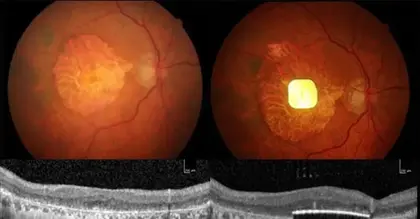Note: This document contains side effect information about bicalutamide. Some dosage forms listed on this page may not apply to the brand name Casodex.
Summary
Common side effects of Casodex include: abdominal pain, nausea, and mastalgia. Other side effects include: flu-like symptoms, gynecomastia, vomiting, and anorexia. Continue reading for a comprehensive list of adverse effects.
Applies to bicalutamide: oral tablets.
Side effects include:
Combined therapy with LHRH analog: hot flashes, pain (including abdominal, back, and pelvic pain), asthenia, constipation, infection, nausea, dyspnea, diarrhea.
Gynecomastia and breast pain frequent if bicalutamide (the active ingredient contained in Casodex) used as monotherapy.
For Healthcare Professionals
Applies to bicalutamide: oral tablet.
Other
Very common (10% or more): Pain (35%), asthenia (22%), peripheral edema (13%)
Common (1% to 10%): Weight loss, weight gain, fever, chills, hernia, cyst[Ref]
Cardiovascular
Very common (10% or more): Hot flashes (53%)
Common (1% to 10%): Chest pain, hypertension, angina pectoris, congestive heart failure, myocardial infarction, coronary arrest, coronary artery disorder, syncope[Ref]
General
In patients with advanced prostate cancer treated with this drug in combination with an LHRH analog, the most frequent adverse reaction was hot flashes (53%).[Ref]
Gastrointestinal
Very common (10% or more): Constipation (22%), pelvic pain (21%), nausea (15%), diarrhea (12%), abdominal pain (11%)
Common (1% to 10%): Dyspepsia, flatulence, vomiting, melena, rectal hemorrhage, dry mouth, dysphagia, GI disorder, periodontal abscess, GI carcinoma[Ref]
Hepatic
Common (1% to 10%): Increased liver enzyme test, alkaline phosphatase increased, elevated AST, elevated ALT, elevated bilirubin
Genitourinary
Very common (10% or more): Nocturia (12%), hematuria (12%)
Common (1% to 10%): Urinary tract infection, gynecomastia, impotence, breast pain, urinary frequency, urinary retention, urinary impaired, urinary incontinence, decreased libido, dysuria, urinary urgency, hydronephrosis, urinary tract disorder[Ref]
Metabolic
Common (1% to 10%): Anorexia, hyperglycemia, bone pain, myasthenia, edema, BUN Increased, creatinine increased, dehydration, gout, hypercholesteremia[Ref]
Hematologic
Very common (10% or more): Anemia (11%)
Common (1% to 10%): Decreased hemoglobin, decreased white cell count
Postmarketing reports: Increased PT/INR due to interaction between coumarin anticoagulants and this drug; serious bleeding reported[Ref]
Renal
Common (1% to 10%): Elevated creatinine[Ref]
Musculoskeletal
Very common (10% or more): Back pain (25%)
Common (1% to 10%): Paresthesia, neck pain, leg cramps, myalgia[Ref]
Nervous system
Common (1% to 10%): Headache, neuropathy, hypertonia[Ref]
Respiratory
Very common (10% or more): Dyspnea (13%)
Common (1% to 10%): Cough, pharyngitis, bronchitis, pneumonia, rhinitis
Uncommon (0.1% to 1%): Lung disorder, asthma, epistaxis, sinusitis
Postmarketing reports: Interstitial lung disease (sometimes fatal) including interstitial pneumonitis and pulmonary fibrosis, most often at doses greater than 50 mg[Ref]
Dermatologic
Common (1% to 10%): Rash, sweating, dry skin, alopecia, pruritus, herpes zoster, skin carcinoma, skin disorder
Postmarketing reports: Photosensitivity[Ref]
Immunologic
Very common (10% or more): Infection (18%)
Common (1% to 10%): Influenza syndrome[Ref]
Ocular
Common (1% to 10%): Specified cataract[Ref]
Psychiatric
Common (1% to 10%): Insomnia, anxiety, depression, confusion, somnolence, nervousness[Ref]
Oncologic
Common (1% to 10%): Neoplasm[Ref]




